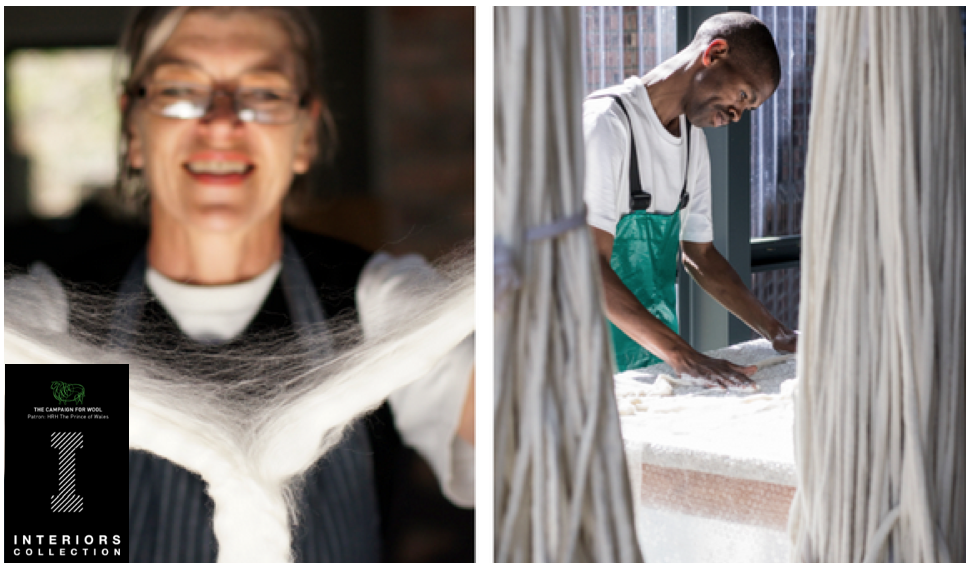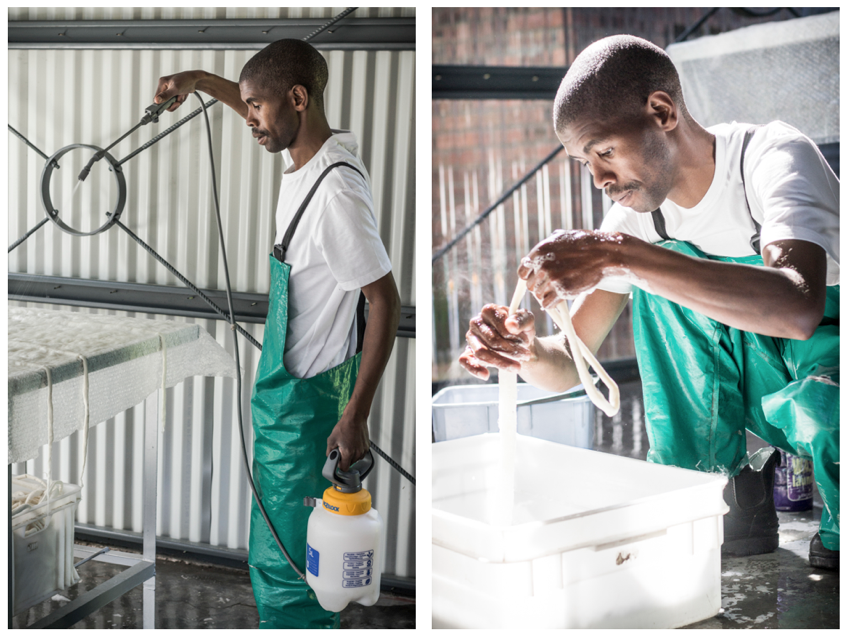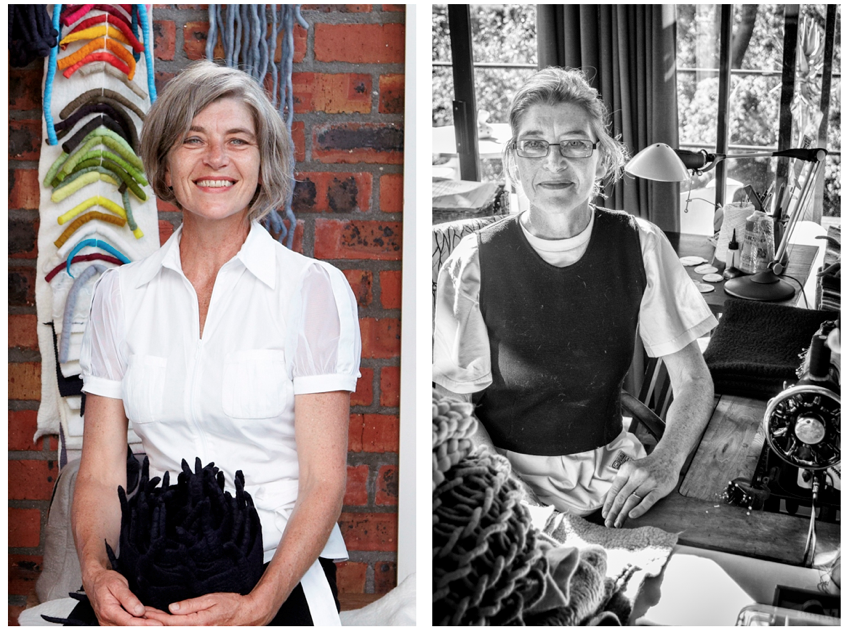Q&A with Stephanie Bentum of Krafthaus

The Campaign for Wool spoke to Stephanie Bentum of Krafthaus to discuss the interior brand’s relationship with wool. Stephanie explained how Krafthaus’ use of wool in their handmade wool textiles and products reflects her longstanding commitment to an environmentally sustainable lifestyle.
Besides taking part in Wool Collection: Interiors, Krafthaus is now collaborating with Heals during wool week to provide the window display for the ‘An Uncommon Thread’ installation. Heals is producing a 30m x 3m cat’s cradle, made from 500m of thick, handmade woollen yarn from Krafthaus South Africa. At the cat’s cradle, other beautiful wool pieces, made in the UK, will also be on display, such as Naomi Paul’s lampshades and Kirsty Whyte’s Orwell armchair. The Abacus – the latest four-poster bed from Heals can also be viewed. It includes a new organic wool mattress, made in Lancashire, for the perfect night’s sleep.
Please tell us a little about yourselves and how your business/designs/products utilise wool?
I think it is the smell of wool that I recall the most from growing up on a research farm in the 1960s, which inspired me – after working in the fashion and interior industries, to start my own range of textiles, especially with the demise of the textile industry in South Africa.
In 2008, not being able to find local natural fibres to work with, I discovered felting and started a small manufacturing studio where we make all our own textiles and products by exclusively using animal fibres and Merino wool in particular. I am fortunate to live in a place surrounded by nature, which inspires our choice of shapes and colours.
What makes you choose wool over other fibres? What is your favourite thing about wool?
Wool is a natural and sustainable fibre. Working with it and utilising its many properties gives me endless satisfaction. For me, the most amazing aspect of wool is its ability to be shaped and manipulated. It memorises changes and is therefore able to shape three dimensionally.
By what means do you source your wool?
I procure washed and combed wool from one of the major wool processing suppliers in South Africa.
What does the Campaign for Wool mean to you?
The Campaign for Wool creates a huge awareness of the qualities of wool and for our brand it is an opportunity to be part of positively promoting my choice of fibre.
The interiors landscape is forever changing, what does 2014/15 hold for you as a brand?
To be progressive in creating timeless and classic designs; mindful of the intrinsic qualities of the fabric and not compromising in its execution. There is an underlying sense of adventure in everything we do, influenced by the ever-changing creativity of our global environment. We continue developing and manufacturing high-end textiles, applicable to the interior industry – particularly home ware.
Fabric technologies, particularly those using wool have advanced so rapidly over the last few years, has this affected your trade and work?
It is truly inspirational how wool has been developed through technology. However, in South Africa we are limited by technological advancement and so our manufacturing methods continue to be handmade whereby each piece is individually crafted, which enables the detail one needs to create long lasting and luxurious products.
How do using woollen cloths differ to other man-made materials?
Wool, whether cloth or knit, is easy to work with, since it has a natural drape that can be manipulated to suit any design. I also enjoy the fact that wool is a natural fibre. It means that from the farmer to the end product, the processes are mostly environmentally kind and as it disintegrates on waste dumps, it reduces landfill. Manmade fibres use precious water and produces toxic waste.
Wool is a natural fibre that breathes and has a luxurious sensuous feeling on the skin.
What demand have you seen from your customers with regards to favouring wool over synthetic fibres?
There is clearly a rekindled awareness of all things natural including the qualities of wool yet is still perceived as an expensive commodity.
Are there any plans to introduce more wool in to your collection?
Merino wool is my main choice of fibre. We will continue working with different types of wool. Each piece of fabric and product is handcrafted, mindful of the intrinsic qualities of the fibre and not compromising in execution.
To find out more about Krafhaus visit http://www.krafthaus.co.za/
Stephanie Bentum as a World Design Capital 2014 Cape Town participant will also have some of Krafthaus’ wool throws on show and for sale at the beautifully curated South African pop up shop at Hepsibah Gallery on the 3rd and 4th October from 10am-5pm. Visit www.lekkaliving.com for more information.
Krafthaus are taking part in the Wool Collection: Interiors at Southwark Cathedral during Wool Week. Read more about the exhibition at http://www.campaignforwool.org/news-item/the-campaign-for-wool-interiors-collection/







